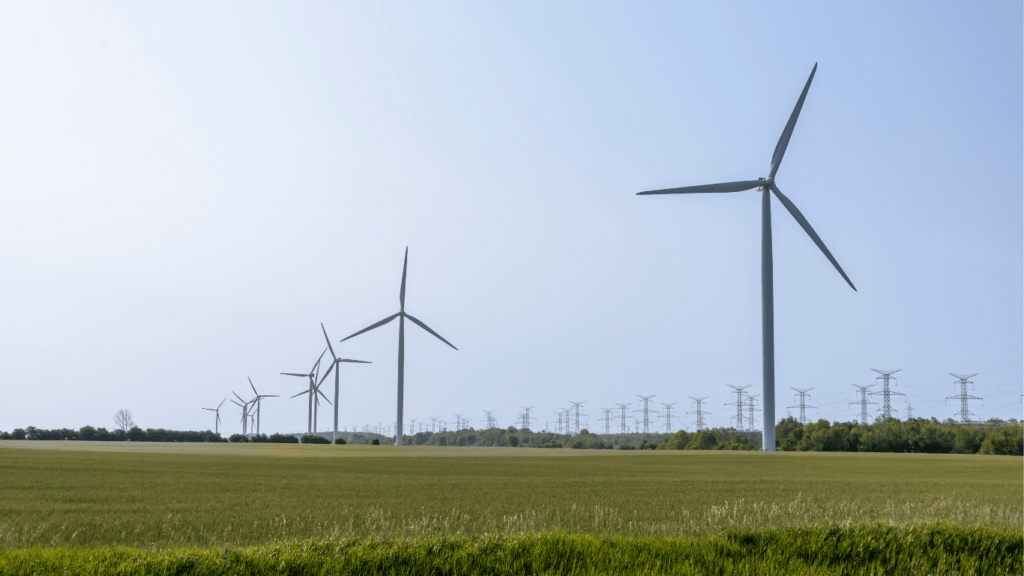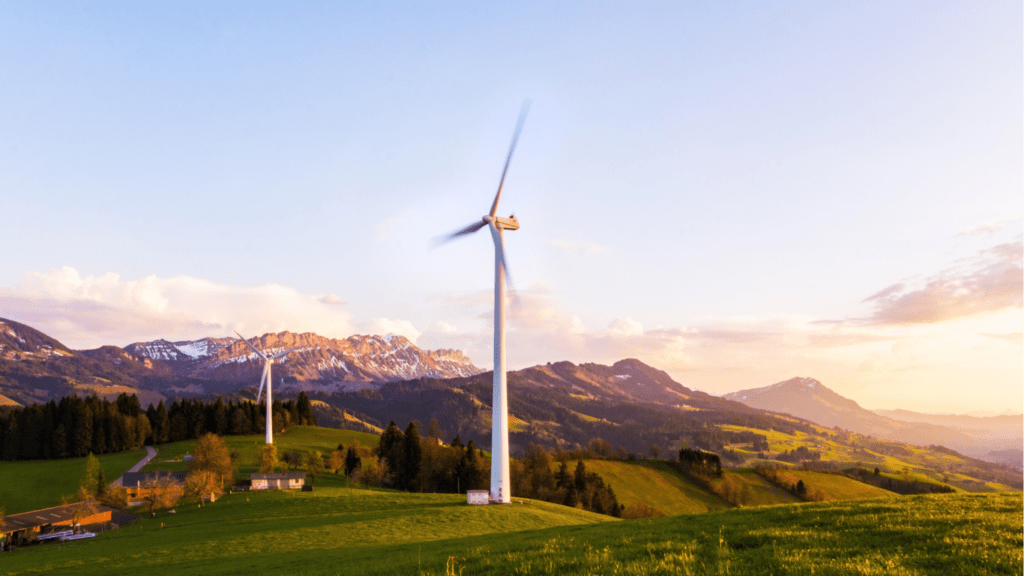Understanding Green Investments
Green investments focus on funding projects that benefit the environment. Investors allocate capital to initiatives aimed at reducing carbon footprints, promoting renewable energy, and fostering sustainable practices. These investments not only promote ecological well-being but also present promising financial returns.
Types of Green Investments
- Renewable Energy Projects: Startups working on solar, wind, and hydroelectric power attract considerable funding. Companies installing solar panels or building wind farms are prime examples.
- Green Technologies: Innovations improving energy efficiency or reducing waste fall under this category. Startups developing smart grids and energy-saving appliances gain investor interest.
- Sustainable Agriculture: Businesses implementing eco-friendly farming practices or developing organic products see substantial investments. Examples include vertical farming and organic fertilizers.
Benefits of Green Investments
- Ecological Impact: Green investments contribute to environmental conservation. They help reduce greenhouse gas emissions and promote sustainable resource use.
- Economic Returns: Green startups often experience significant growth, resulting in profitable returns for early investors. Renewable energy projects, in particular, offer long-term financial stability.
- Regulatory Incentives: Governments support green investments through incentives and subsidies. Investors benefit from tax credits or grants when they back eco-friendly ventures.
Key Considerations for Investors
- Market Potential: Evaluate the market demand for the green startup’s product or service. High demand suggests better investment prospects.
- Technology Viability: Ensure the technology behind the startup’s offering is feasible and scalable. Reliable technology enhances the project’s success potential.
- Government Policies: Be aware of government regulations and incentives related to green investments. Supportive policies can increase the initiative’s profitability and reduce risk.
Understanding green investments in startups offers valuable insights into the growing trend. By prioritizing ecological benefits and sound financial strategies, investors drive both environmental progress and economic success.
The Growing Interest in Green Startups
I see growing interest in green startups, fueled by amplified environmental awareness and consumer demand, alongside supportive government policies.
Environmental Awareness and Consumer Demand
Environmental awareness drives consumers to seek products and services from green startups. People now prefer companies that prioritize sustainability.
For instance, brands using eco-friendly materials or carbon-neutral practices attract more customers. This shift puts pressure on businesses to adopt green practices. It’s clear that prioritizing sustainability aligns with evolving consumer values, leading to increased loyalty and sales.
Government Policies and Incentives
Governments globally introduce policies to support green startups. These initiatives include tax breaks, grants, and subsidies. For example, in the United States, the federal government offers tax credits for renewable energy ventures.
Such incentives make green projects financially viable. Startups benefit from reduced operational costs and access to funds. Government backing thus plays a vital role in scaling green businesses.
Key Sectors Attracting Green Investments
Startups in various sectors are attracting significant green investments. These investments focus on areas that offer both environmental impact and potential financial returns.
Renewable Energy

Renewable energy startups are drawing substantial interest. Investors are particularly keen on solar and wind energy companies, which provide sustainable alternatives to fossil fuels.
The International Energy Agency reported that renewable energy installations grew by 45% in 2020, highlighting the sector’s rapid expansion. Technologies like photovoltaic solar panels and advanced wind turbines are creating opportunities for innovation and profitability.
Sustainable Agriculture
Sustainable agriculture is another key sector. Green investments are aiding the development of practices that minimize environmental impact and promote food security.
For example, companies focusing on organic farming, crop rotation, and precision agriculture are receiving considerable funding. The United Nations estimates that sustainable agricultural practices could reduce global greenhouse gas emissions by up to 30%. This underscores the significant role these startups play in combating climate change.
Eco-Friendly Technologies
Eco-friendly technologies are revolutionizing traditional industries. Startups in this sector leverage innovations to reduce waste, recycle materials, and lower carbon footprints.
Examples include biodegradable packaging, energy-efficient appliances, and electric vehicles. According to a report by Deloitte, the global market for green technologies is set to reach $600 billion by 2025. These advancements not only drive environmental benefits but also present lucrative investment opportunities.
Case Studies of Successful Green Startups
Examining real examples of successful green startups helps illustrate the potential and impact of eco-friendly investments.
Company A
Company A, founded in 2010, focuses on renewable energy solutions. Its flagship project involved developing a cost-effective solar panel using innovative materials. By 2015, it secured $50 million in funding from venture capital firms. It deployed over 1,000 solar panels, reducing carbon emissions by 200,000 tons annually. Its success showcases the viability of renewable energy investments and their environmental benefits.
Company B
Established in 2012, Company B specializes in sustainable agriculture technologies. It developed an AI-driven irrigation system that optimizes water usage based on real-time data. In 2018, it raised $25 million in Series B funding. Farmers using its system reported a 30% reduction in water use and a 20% increase in crop yield. This case demonstrates how technology can enhance sustainable practices, making agriculture more efficient and eco-friendly.
Challenges Facing Green Investments
Despite the promising future for green startups, several challenges hinder their widespread adoption and success.
Financial Risks
Green investments often come with high financial risks. Eco-friendly technologies, for example, typically require significant upfront capital. This high initial investment deters some investors who seek immediate returns. Additionally, market volatility, especially in renewable energy sectors, can affect profitability. For example, fluctuating prices in solar panel materials impact the revenue of solar energy startups.
Regulatory Hurdles
Regulatory hurdles pose significant challenges. Governments, even when supportive of green initiatives, have varying policies and regulations. These inconsistencies complicate compliance for startups operating in multiple regions. Furthermore, bureaucratic delays often slow project approvals. For instance, obtaining necessary permits for a wind farm can take years, delaying the startup’s operations and potential returns.
This structured content under the section “Challenges Facing Green Investments” outlines the financial and regulatory difficulties green startups face, maintaining a coherent and natural flow from the previous sections.
The Future of Green Investments in Startups
Green investments in startups continue to grow, driven by technological advancements, policy shifts, and increasing environmental consciousness.
Emerging Trends
Several key trends define the future landscape. Advanced technologies, such as blockchain and IoT (Internet of Things), offer increased efficiency and transparency. Blockchain ensures secure, transparent transactions in carbon trading and energy distribution, while IoT optimizes resource use in agriculture and smart cities.
Hybrid funding models combining venture capital, grants, and crowdfunding are gaining traction, expanding funding access. Public-private partnerships foster collaboration, with governments and private entities co-investing in sustainable projects. The rise of impact investing focuses on measurable environmental outcomes, aligning investors’ financial goals with sustainability objectives.
Long-term Impact on Industries
Long-term, green investments reshape multiple industries. Renewable energy will displace fossil fuels, with solar and wind energy becoming primary power sources. Sustainable agriculture will see higher yields and resource efficiency, aided by AI and precision farming.
Automotive industries will face significant transitions toward electric vehicles (EVs) and hydrogen fuel cells. Buildings and infrastructure will prioritize energy efficiency, using green construction materials and smart management systems.
These changes not only mitigate climate issues but also open new market opportunities, compelling industries to innovate and adopt sustainable practices.

 Chief Operations Officer (COO)
As Chief Operations Officer, Ava Brodribb ensures that all aspects of the company's operations run smoothly and efficiently. With a keen eye for detail and a commitment to operational excellence, Ava oversees daily business activities, manages resources, and leads cross-functional teams to achieve the company’s goals. Her background in project management and operational strategy has been instrumental in driving the company’s success and maintaining its competitive edge in the marketplace.
Chief Operations Officer (COO)
As Chief Operations Officer, Ava Brodribb ensures that all aspects of the company's operations run smoothly and efficiently. With a keen eye for detail and a commitment to operational excellence, Ava oversees daily business activities, manages resources, and leads cross-functional teams to achieve the company’s goals. Her background in project management and operational strategy has been instrumental in driving the company’s success and maintaining its competitive edge in the marketplace.
